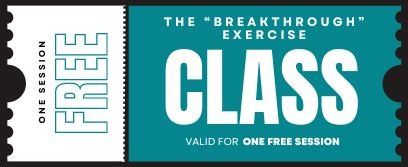Have you ever felt like your body is betraying you? Like your knees or hips, which carried you with ease just a few years ago, are now holding you back? It’s as if your joints are whispering secrets about you that you don’t want to hear—reminders of age, limitations, or maybe even a warning that things will only get worse.
But here’s the thing, friend: Joint pain isn’t just a sign of aging. In fact, it’s your body’s way of sending you a message, a signal that something deeper needs your attention. And while it’s easy to blame it on “getting older,” there’s often so much more at play.
The Real Cause Behind That Ache
Think of your body as a carefully designed machine, crafted to move, bend, and stretch with grace. When you’re constantly running, lifting, or simply going through the motions of life, the wear and tear starts to add up—just like a car engine left running day after day without the proper fuel, rest, and care.
In the same way that poor-quality oil can clog an engine, inflammatory foods, stress, and hormone imbalances can clog up your body’s natural flow. This buildup doesn’t just stay in one place; it flows into your bloodstream, moving through your joints, muscles, and tissues, sparking little fires of inflammation along the way. Over time, these “fires” don’t just cause pain; they create stiffness, fatigue, and even sadness, taking away your freedom to move as you once did.
The Myths We’ve Been Told
So many women over 40 believe that joint pain is just something to “live with.” Maybe you’ve heard this before, or even told yourself, “It’s just part of getting older.” But let me be firm with you here: Joint pain is not your destiny. Just because you’ve turned 40, 50, or even 60 doesn’t mean that you have to settle for a life of discomfort.
Imagine if you went to a doctor with a broken bone, and they simply shrugged and said, “That’s life. Learn to live with it.” You’d leave feeling unheard, defeated, maybe even a little angry, right? Joint pain deserves the same level of attention and care, not dismissal.
The Body’s Secret Language
Your body is a master communicator, always trying to show you what it needs, where it’s struggling, and how you can help it. When you feel pain, it’s your body’s way of saying, “Please, slow down and pay attention.” Pain is not a punishment; it’s a call to action.
If you’re experiencing joint pain, your body may be asking for something different—nourishing foods to reduce inflammation, gentle stretches to release tension, or perhaps a break from the stressors you’ve been carrying like a heavy backpack. Your body needs your compassion, not just for what it is now, but for all it has carried you through.
What You Can Do Today
Instead of letting your pain define you, let it guide you toward change. Here are some steps to help your body feel supported and loved:
- Nourish with Anti-Inflammatory Foods: Think of your joints as a garden. The right foods—leafy greens, colorful veggies, omega-rich fish, and antioxidant-packed berries—are like water for that garden, reducing inflammation and helping it thrive.
- Move Mindfully: Imagine your joints as hinges on a gate. If left unused, they rust; if forced too hard, they weaken. Choose low-impact exercises like walking, swimming, or gentle yoga to keep your “hinges” oiled and mobile.
- Rest and Rejuvenate: You are not a machine meant to run endlessly. Rest is essential, not just for your mind but for your body to repair and rebuild.
- Release Stress: Chronic stress can feel like invisible weights on your joints, making everything feel heavier. Take time each day to breathe deeply, stretch, or simply enjoy a moment of peace.
- Seek Support: Remember, you don’t have to do this alone. Finding a program or community that understands your body’s needs and guides you with knowledge and compassion can be transformative.
Closing Thoughts
The truth is, your body is incredibly resilient. It doesn’t want to punish you—it wants to partner with you. The sooner you listen to its signals, the sooner you can begin to feel the freedom of movement and energy again.
And if you take just one thing from this, let it be this: Pain is a part of your story, but it’s not the end. Let it guide you, not define you.
“Healing may not be so much about getting better, as about letting go of everything that isn’t you—all of the expectations, all of the beliefs—and becoming who you are.” – Rachel Naomi Remen
Your journey isn’t over, friend; it’s just beginning. Are you ready to take the first step toward lasting relief?

